Does the thought of living off the beaten track sound appealing? Interest in island living is on the rise, and with nearly 800 islands scattered around its coasts, Scotland has no shortage of possibilities. Although many are little more than wind-blasted rocks and nesting sites for seabird colonies, a few are home to thriving communities, each with its own distinct character.
But while the romantic pull of island life may be tempting, each place also comes with its own set of practical challenges that should be considered.
The World’s Best Retirement Havens for 2026
The World’s Best Retirement Havens for 2026
24 Countries Compared, Contrasted, Ranked, and Rated. You don’t have to be rich to enjoy a pampered retirement, you just need to know where to go. With our 35th Annual Global Retirement Index, our experts hand you a detailed roadmap. Details—and a Special Offer—Here

By submitting your email address, you will receive a free subscription to IL Postcards, The Untourist Daily and special offers from International Living and our affiliates. You can unsubscribe at any time, and we encourage you to read more about our Privacy Policy.
Scottish Island Living
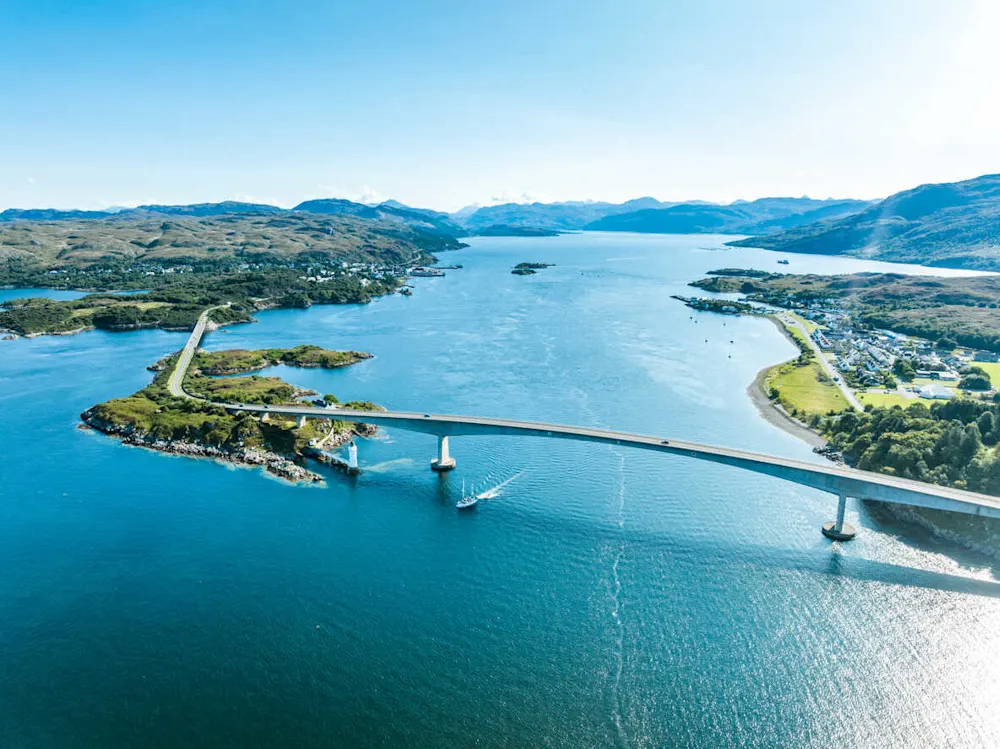
Turquoise water laps at white-sanded shorelines, or a lonely cottage tucks against a brooding mountain. It looks too beautiful to be real. But these are the islands of Scotland, and if this scenery has captured your imagination enough to consider moving here, there are certain things you need to know before packing everything up and jumping on the next ferry over here.
Small Places, Strong Bonds
In small island communities, residents often know each other well, creating a supportive network that can be both comforting and, at times, challenging. Living in this environment means forming long-standing relationships with neighbors and being ready to lend a hand when needed. Community events also play an important role in keeping social bonds strong and preserving cultural heritage on the Scottish islands.
Gaelic culture remains integral to island life. Bilingual road signs are common, reflecting efforts to preserve the language. Music and storytelling thrive, and Ceilidhs—traditional Scottish social events featuring music and dancing—are common. The Hebridean Celtic Festival in Stornoway, for example, attracts visitors from around the world each summer to celebrate Celtic music and culture.
Dramatic and Diverse Landscapes
Scotland’s islands are extremely diverse, each one shaped by the forces of nature and traces of ancient settlement. Some, like the treeless moors of North Uist, are windswept and wild, while others, such as the Isle of Bute, surprise with subtropical gardens like those at Mount Stuart. The machair plains on the West Hebridean shores bloom with wildflowers in summer, while Orkney’s fertile farmland reflects a rich agricultural heritage. Lewis and Harris in the Outer Hebrides boast some of Scotland’s most stunning beaches and are often compared to a tropical paradise—albeit with a somewhat cooler climate!
Scottish Islands Worth Exploring
From remote and rugged to lively and lived-in, these five islands show just how varied island life in Scotland can be.
1. Isle of Arran
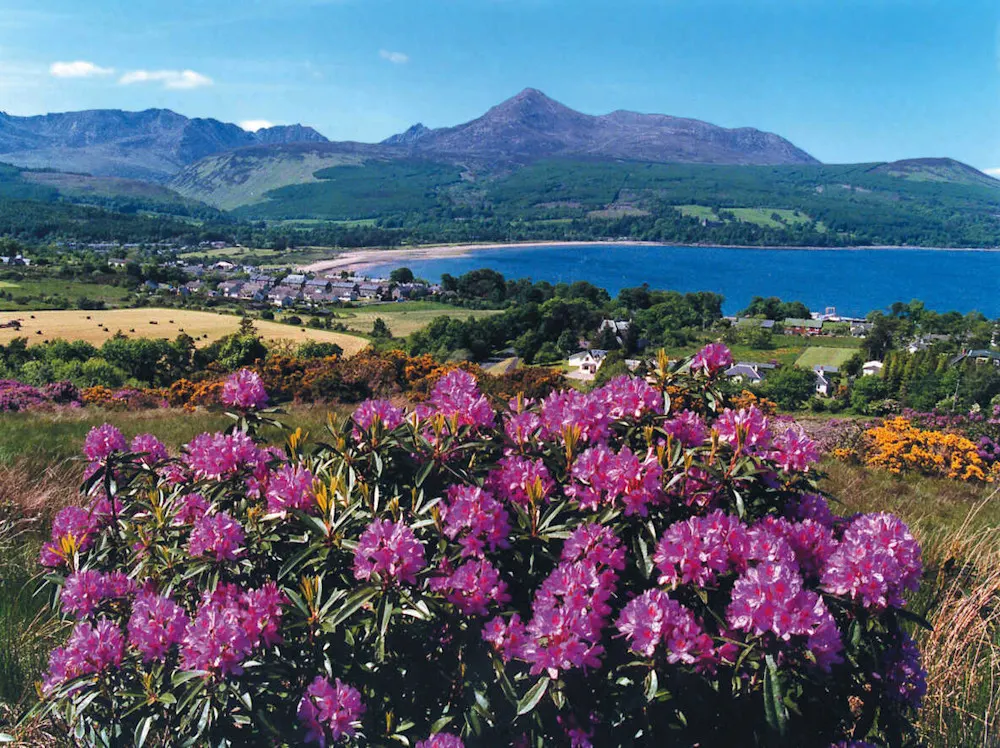
Often called “Scotland in miniature,” Arran has mountains, beaches, castles, and distilleries in a landscape that’s as varied as it is accessible. Just a short ferry ride from Ardrossan on the west coast, it’s the largest island in the Firth of Clyde and home to around 4,700 people—a number that more than quadruples in summer. Goat Fell stands watch over the island while the 63-mile Arran Coastal Way circles its shores.
For those considering a move here, Arran offers a rare balance of peaceful island life with the practicalities of the mainland within easy reach. There are excellent schools and healthcare, and the main employment is in tourism, hospitality, distilling, and salmon farming.
2. Isle of Skye
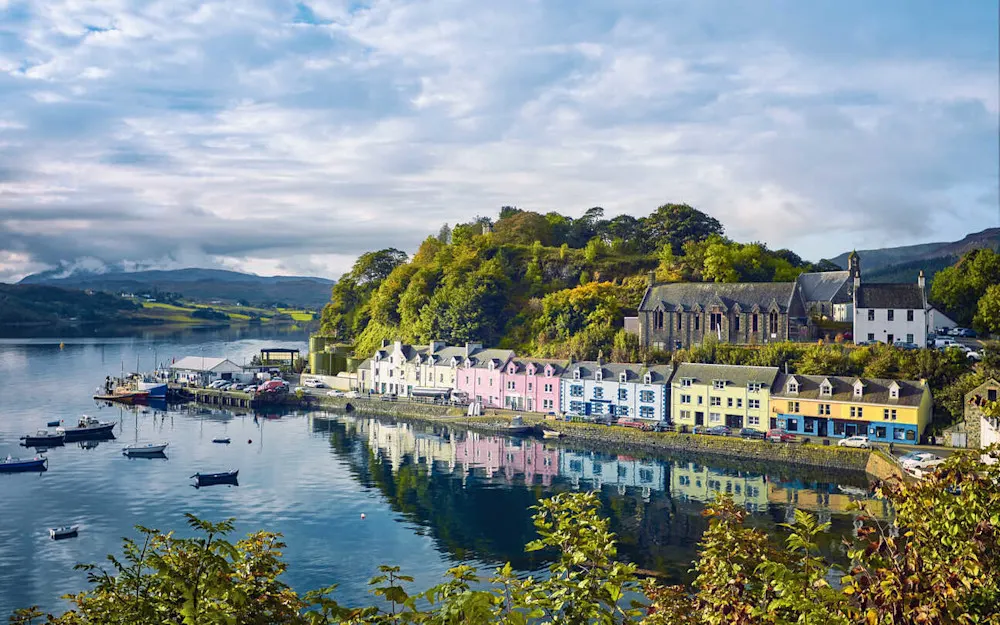
The largest and probably most well-known island in the Inner Hebrides, Skye’s popularity has turned it into a busy place all year round. Home to around 10,000 residents, the population swells in summer when visitors flock to landmarks like the Fairy Pools and the Old Man of Storr. Roads can become congested—especially with camper vans—so it’s worth noting if you want to avoid crowds.
The island’s wild heart is the Cuillin range, a dramatic and challenging set of jagged peaks beloved by serious climbers. The main town of Portree is where you’ll find shops, restaurants, and a growing arts scene. Tourism is the island’s biggest employer, though there’s also work in fishing, forestry, and farming. You can reach Skye by road via the Skye Bridge or by ferry.
3. Isle of Mull
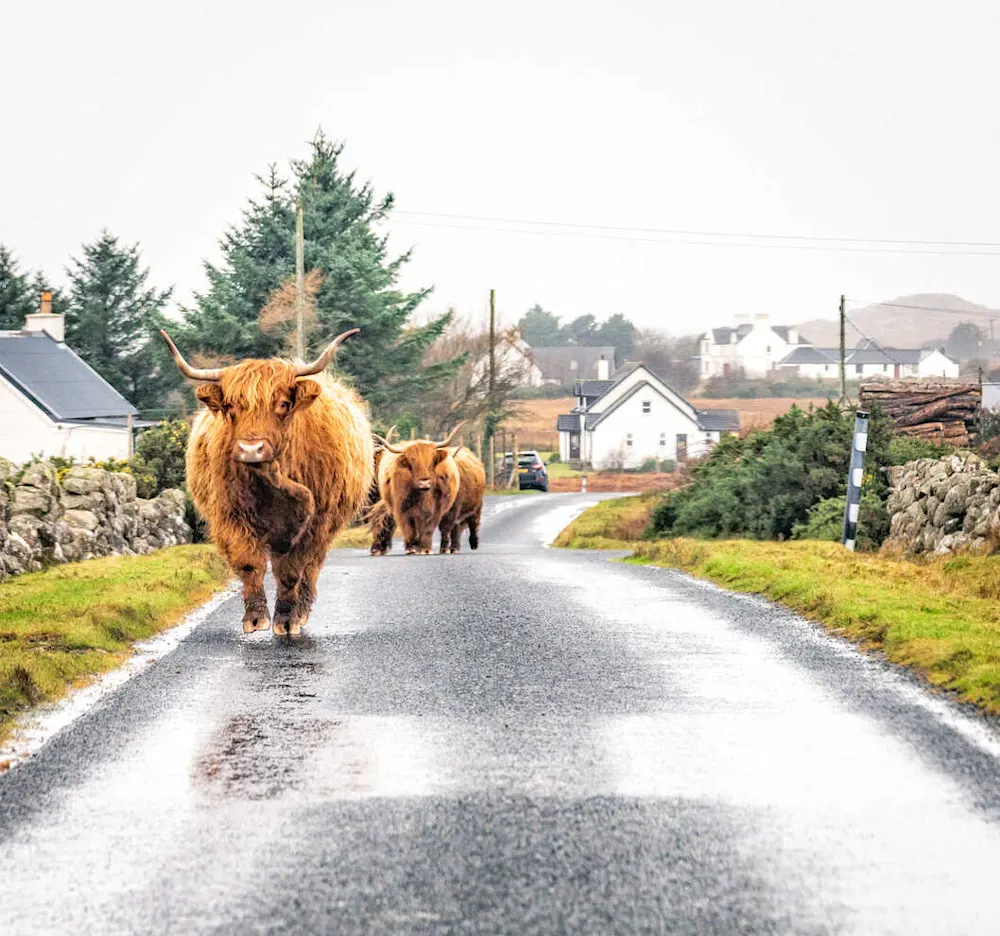
With a population of around 3,000, Mull is known for its wild beauty and rich wildlife. It’s one of the best places in the UK to spot sea eagles, otters, puffins, and dolphins, in a landscape that shifts from moorlands to woodlands and lochs. The brightly painted harbor town of Tobermory is home to the high school, most shops, and a small arts scene, while Craignure has a hospital and is the main ferry link to the mainland.
Mull is also ideal for exploring nearby islands like Staffa—famous for its striking basalt columns—and the natural wonder of Fingal’s Cave, often described as “the cathedral of the sea.” Iona, known for its ancient abbey and spiritual history, is another popular day trip. Tourism, fishing, distilling, and hospitality provide most of the employment here.
4. Isle of Jura
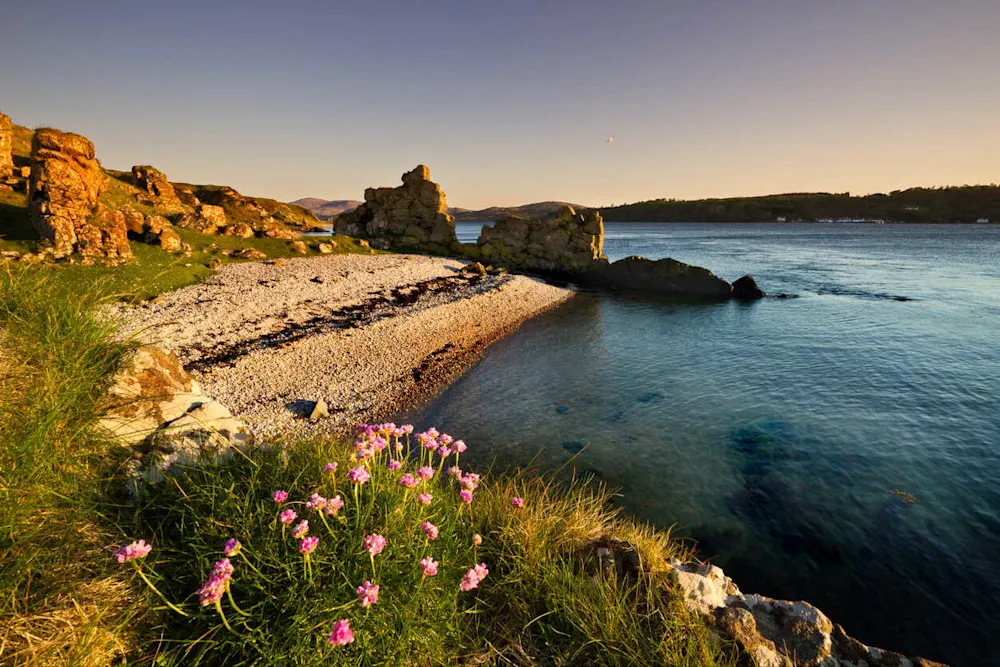
If you’re seeking true remoteness, the Isle of Jura has fewer than 250 residents, but around 6,000 red deer. George Orwell famously finished 1984 here, drawn by the wild island’s isolation and bleak beauty. It’s accessible via a short ferry from Port Askaig on Islay, after reaching Islay itself by boat or plane from the mainland.
Jura has its own whisky distillery, and there are nine more just across the water on Islay. One of Jura’s most dramatic natural features is the Corryvreckan whirlpool at its northern tip—one of the largest and most dangerous in the world. Best admired from dry land, its turbulent waters still catch the occasional boat off guard.
5. Orkney Islands
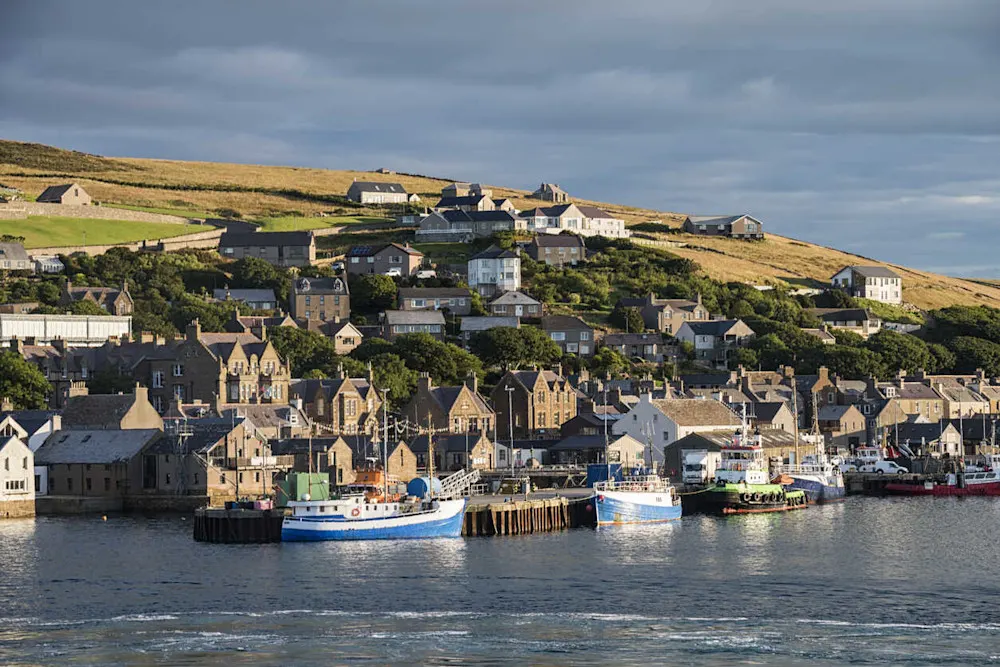
Made up of 70 islands, Orkney sits off Scotland’s northern coast and is very different from the rocky Hebridean Isles to the west. Rich in Norse history, here you’ll find some of Europe’s most important prehistoric sites, including Skara Brae, Maeshowe, and the Ring of Brodgar, all part of a UNESCO World Heritage Site.
Regularly voted one of the best places to live in the UK, Orkney is well-equipped with public transport, top-class education and healthcare, and a thriving arts and culture scene—the islands are known for their lively festivals and artistic communities. There are daily flights to Kirkwall and daily ferries from several mainland locations. A wide range of employment exists across agriculture, fisheries, and aquaculture.
Other Islands Worth Exploring
Lewis & Harris: You’ll find some of the UK’s most stunning beaches here, like Luskentyre, and it’s the birthplace of the iconic Harris Tweed.
Eigg: Known for its community-owned renewable energy grid and eco-conscious lifestyle, perfect for those interested in green living.
Iona: Famed for its spiritual significance and the historic Iona Abbey, a peaceful retreat for reflection.
Barra: Home to a unique beach airport where planes land directly on the sands of Traigh Mhòr.
Shetland: Closer to Norway than Edinburgh, Shetland has Viking roots and one of the most distinctive island cultures in Scotland.
The World’s Best Retirement Havens for 2026
The World’s Best Retirement Havens for 2026
24 Countries Compared, Contrasted, Ranked, and Rated. You don’t have to be rich to enjoy a pampered retirement, you just need to know where to go. With our 35th Annual Global Retirement Index, our experts hand you a detailed roadmap. Details—and a Special Offer—Here

By submitting your email address, you will receive a free subscription to IL Postcards, The Untourist Daily and special offers from International Living and our affiliates. You can unsubscribe at any time, and we encourage you to read more about our Privacy Policy.
What Life is Really Like on the Islands
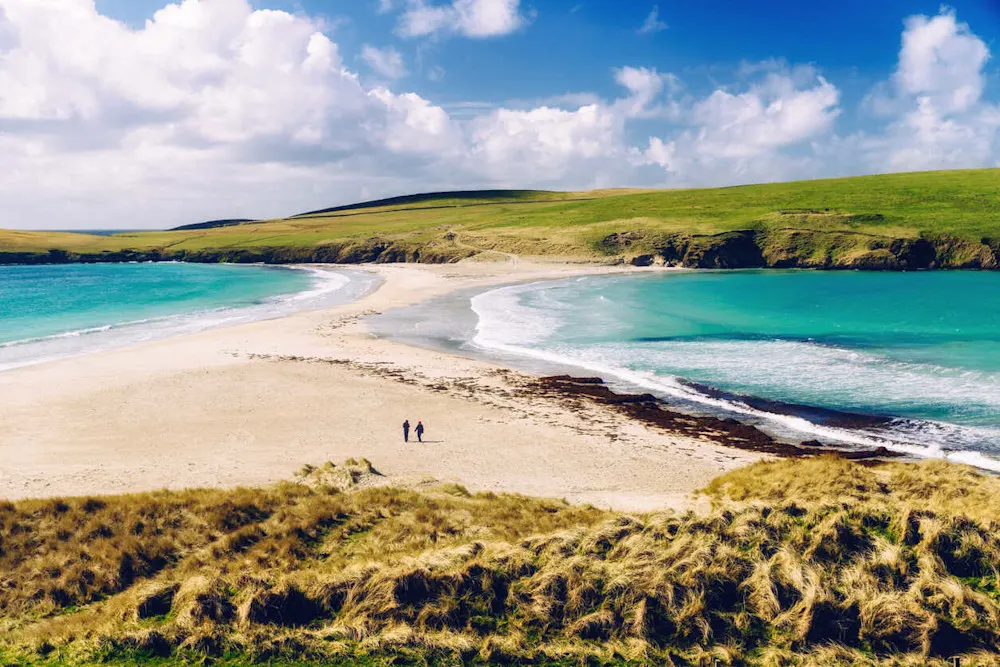
If you’re thinking of trading the bustle of city life for calmer coastal paths, island living is certainly tempting. But while it can be extremely rewarding, it also comes with its own set of challenges. Understanding the realities of living in these remote communities is essential if you’re considering making the move.
Year-Round Living and Population
Scotland’s islands vary significantly in population depending on the season. Summer brings a surge of visitors, with some places seeing a huge increase in numbers. This can put a strain on local services, leading to challenges for residents. In contrast, smaller islands like Jura have limited services and very few residents, which can lead to a sense of isolation, especially during the winter months.
These seasonal shifts also affect job opportunities. Tourism-driven economies may thrive in the summer but slow down out of season, impacting local businesses and employment. If you’re thinking about making a long-term move, it’s worth taking these seasonal rhythms into account when weighing up island life.
The Practicalities of Everyday Life
Access to essential services on the larger islands is generally good but can vary depending on location. There are surgeries, pharmacies, and small hospitals that provide basic inpatient care. For more specialized treatment or surgery, residents usually need to travel to the mainland. On smaller or more remote islands, healthcare options are more limited, relying on visiting professionals or mainland support in emergencies.
Education is available across most islands, with primary schools located even in smaller communities. Secondary education is typically found on larger islands, though some students from more isolated areas may need to board or travel longer distances during the school week. While class sizes are often small, access to extracurriculars or specialist resources can be more limited than on the mainland.
Internet access has improved in recent years thanks to government-backed initiatives like the Reaching 100% (R100) programme, which is providing fiber broadband to even the most remote corners of Scotland. That said, connectivity still varies. For remote workers or digital nomads considering island life, it’s wise to research local coverage carefully.
Ferries are a lifeline for most islands, connecting communities to the mainland and one another. These services, primarily run by CalMac, are generally reliable but can be disrupted, particularly in winter, when high winds and rough seas can cancel sailings at short notice. Most residents learn to plan around the weather and stock up on essentials accordingly.
Housing and the Property Market
Finding somewhere to live on the islands isn’t always easy. With more second homes and short-term holiday lets popping up, there are fewer properties available for permanent residents. This has pushed up property prices and rents, making it harder for locals to secure housing.
In response, communities are taking action. The Isle of Gigha, for example, was purchased by its residents in 2002. Since then, they’ve launched housing projects and other efforts to breathe life back into the local economy. In Orkney, a group of residents is developing a Scandi-style co-housing project designed to provide affordable, eco-friendly homes built around community values.
Community and Integration
It takes time to settle into island life. While visitors are often welcomed warmly, becoming a true local means actively participating and showing a genuine commitment to the community. Joining a local committee, helping at an event, and shopping locally all matter. Island communities value self-sufficiency, reliability, and neighborliness. And while you may not be considered a “local” for years, there’s a place for those who genuinely want to belong.
The World’s Best Retirement Havens for 2026
The World’s Best Retirement Havens for 2026
24 Countries Compared, Contrasted, Ranked, and Rated. You don’t have to be rich to enjoy a pampered retirement, you just need to know where to go. With our 35th Annual Global Retirement Index, our experts hand you a detailed roadmap. Details—and a Special Offer—Here

By submitting your email address, you will receive a free subscription to IL Postcards, The Untourist Daily and special offers from International Living and our affiliates. You can unsubscribe at any time, and we encourage you to read more about our Privacy Policy.
